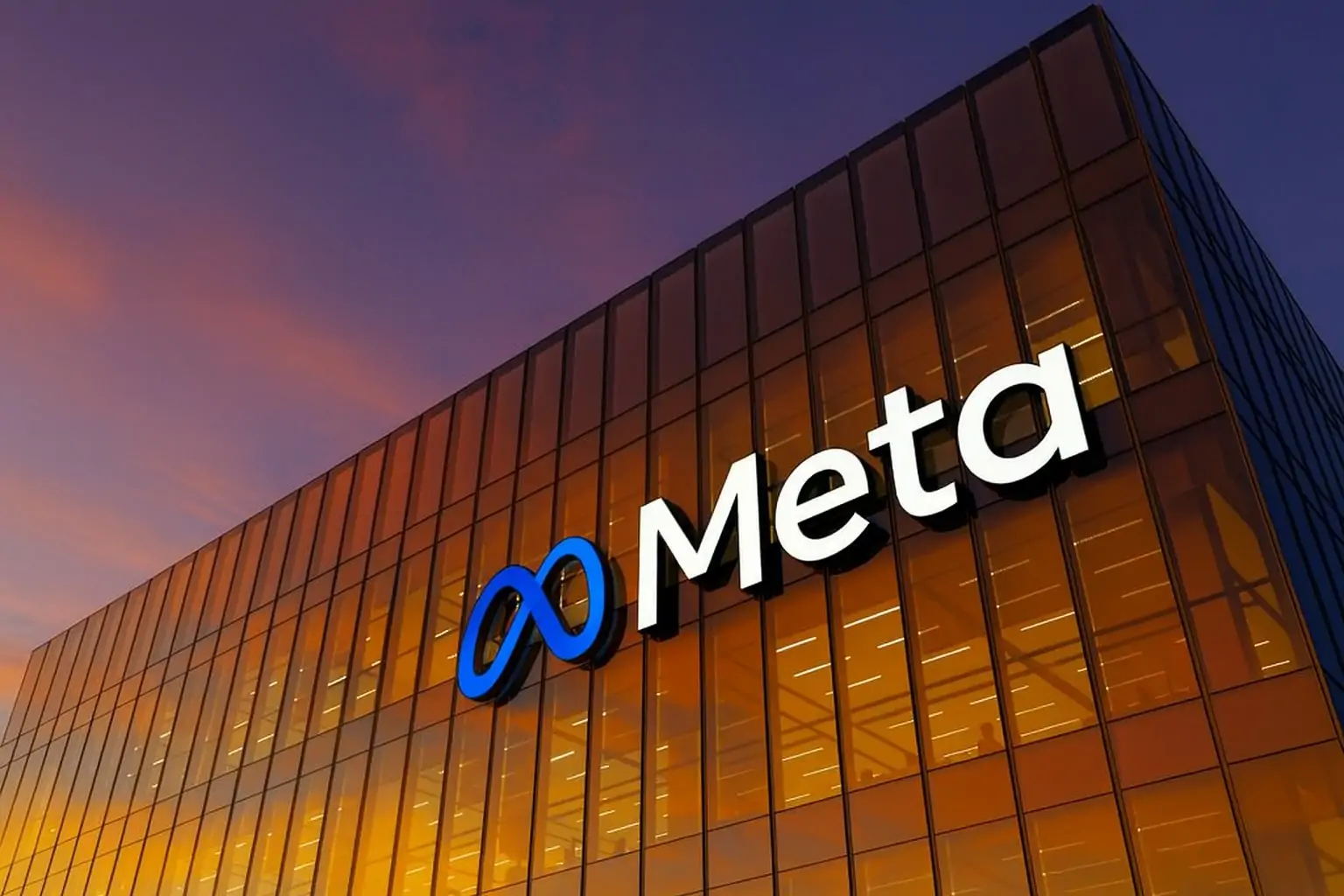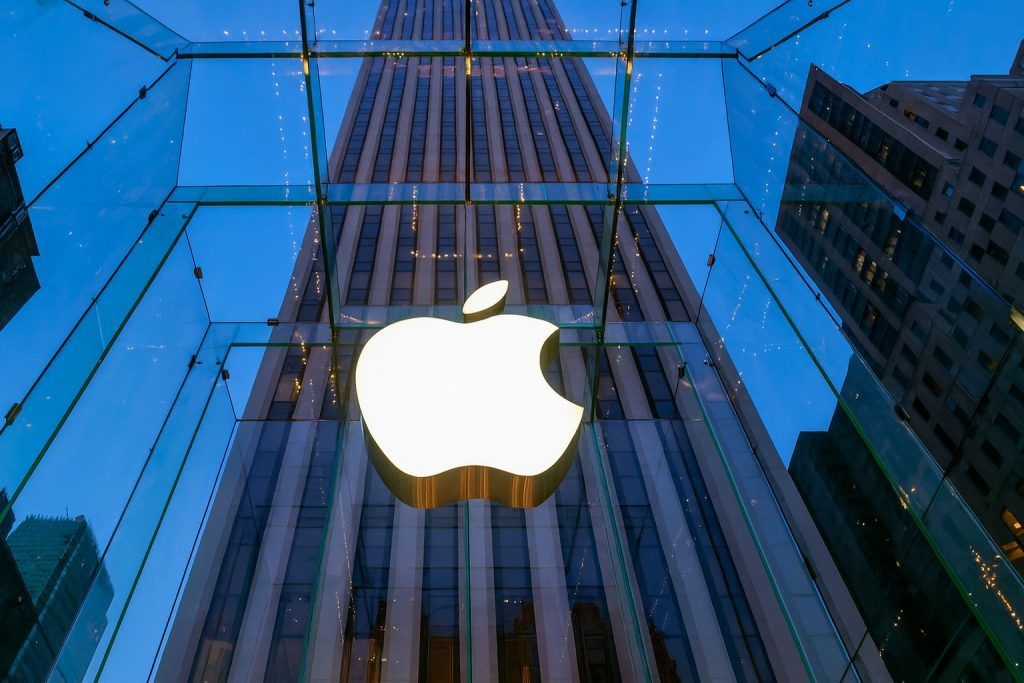Meta Platforms (NASDAQ: META) is starting the new week trying to stabilize after one of its sharpest pullbacks since the 2022 “metaverse” rout. As U.S. markets trade on Monday, November 17, 2025, Meta stock is hovering around $609 per share, roughly flat on the day but sitting more than 23% below its all‑time high near $790 set in August. [1]
The slide has been driven not by collapsing fundamentals, but by alarm over an AI spending explosion: Meta now plans $70–72 billion in 2025 capital expenditures, with even higher spending flagged for 2026. [2] That has split Wall Street into two camps — those who see a worrying echo of earlier metaverse excess and those who see a rare buying window in one of the world’s most important AI platforms. [3]
Key takeaways on Meta stock today (November 17, 2025)
- Price & performance: Meta opened around $609.46, down about 0.1%, leaving the stock ~27% above its 12‑month low of $479.80 but about 23–24% below its 52‑week high of $796.25. [4]
- Valuation reset: After the sell‑off, Meta trades at roughly 27× trailing earnings, near or slightly above its 3‑year average but well below recent peaks in the mid‑30s. [5]
- Big AI bill: Q3 2025 brought record quarterly revenue of about $51.2 billion (up ~26% year over year), but guidance for $70–72 billion of 2025 capex and faster expense growth in 2026 shocked investors. [6]
- Earnings distorted by tax law: A $15.9 billion one‑time, non‑cash tax charge linked to U.S. tax changes crushed GAAP EPS to $1.05, even though underlying profit power remains much higher (Meta says EPS would have been about $7.25 without the charge). [7]
- Analyst split: Austria’s Erste Group downgraded META to “Hold”, citing rising AI capex and reduced buybacks, while the broader Street still tags the stock as a “Moderate Buy” with a consensus target around $828 — implying substantial upside from today’s levels. [8]
- Institutional money is rotating, not fleeing: New filings today show firms like Ethos Financial Group and Resona Asset Management increasing stakes, while others, including Sprucegrove Investment Management, TenCore Partners and Permit Capital, have trimmed holdings. [9]
- AI build‑out continues: Meta just announced its 30th data center — an AI‑optimized facility in Beaver Dam, Wisconsin — and rolled out new AI‑powered features for Facebook Marketplace, underlining why capex is surging. [10]
Meta stock price and technical picture today
According to fresh data from MarketBeat, Meta stock opened at about $609.46 on Monday, putting its market capitalization near $1.5 trillion. The shares now trade with a trailing P/E of about 26–27, a P/E/G near 1.3, and a beta of roughly 1.2 — still volatile, but less frothy than earlier in the year. [11]
From a technical standpoint:
- 12‑month range: about $479.80 (low) to $796.25 (high). [12]
- At today’s ~$609, the stock is roughly 27% above its 1‑year low, but about 23–24% below its 52‑week high and all‑time closing high of $789.47 set on August 12, 2025. [13]
- Meta’s 50‑day simple moving average is around $713.72, and its 200‑day average sits near $706.28, meaning the current quote is far below both — a sign of technical damage after the post‑earnings sell‑off. [14]
In other words, the story isn’t about a stock quietly grinding sideways. It’s about a market leader that went nearly vertical into the summer on AI enthusiasm and then snapped sharply lower as investors started asking how, exactly, tens of billions in AI infrastructure spend will pay off.
What changed: Q3 earnings and the AI spending shock
Meta’s latest earnings report, released on October 29, 2025, is still driving the narrative today.
Record revenue, distorted earnings
On the surface, the quarter looked extremely strong:
- Revenue: about $51.24 billion, beating Wall Street expectations and up ~26% year over year. [15]
- Ad engine still humming: Meta’s own release notes daily active people of 3.54 billion, ad impressions up 14%, and the average price per ad up 10% year over year — a powerful combination of volume and pricing. [16]
- Operating income: just over $20.5 billion, up from $17.4 billion a year earlier. [17]
Yet GAAP EPS plunged to $1.05. That drop wasn’t about collapsing demand, but about tax rules: Meta booked a $15.93 billion one‑time, non‑cash income tax charge tied to the U.S. “One Big Beautiful Bill Act.” [18]
Without that charge, The Guardian notes that EPS would have been around $7.25, comfortably ahead of Wall Street’s $6.70 consensus estimate, underscoring that core profitability remains robust. [19]
The real shock: capex and 2026 spending
The real drama came from forward‑looking spending guidance. In its CFO outlook, Meta said it now expects: [20]
- 2025 total expenses:$116–118 billion, up from prior guidance of $114–118 billion.
- 2025 capital expenditures:$70–72 billion, raised from a previous range of $66–72 billion.
- 2026: capex “notably larger” than 2025, with total expenses growing at a “significantly faster” percentage rate driven primarily by AI infrastructure, including cloud costs, depreciation and ongoing hiring of top AI talent.
That’s a staggering bill, even by mega‑cap standards. The Guardian summarized the tension neatly: Meta is posting record revenue and a still‑powerful ad business, but its AI infrastructure build‑out and Superintelligence Labs spending are stretching investor patience. [21]
The Los Angeles Times captured market sentiment when it reported that Meta shares fell nearly 17% in just four trading days after the earnings call, erasing roughly $300 billion in market value, as investors compared CEO Mark Zuckerberg’s AI spending spree to the earlier metaverse overreach that once knocked 77% off the stock. [22]
Analyst reaction: from downgrades to “classic buying opportunity”
Wall Street hasn’t spoken with one voice.
Downgrades driven by AI capex
- On November 10, Erste Group downgraded Meta from Buy to Hold, arguing that rising AI capex, weaker share buybacks, and likely 2026 spending acceleration limit upside at current valuations. [23]
- The firm expects 2026 capital expenditure growth to outpace even 2025’s elevated levels, driven by compute and cloud costs, and warns that asset turnover may fall further as capital intensity climbs. [24]
Other analysts have trimmed price targets but remain generally positive. Across multiple recent 13F‑related notes, MarketBeat highlights:
- Wells Fargo, Jefferies, Piper Sandler, RBC, Bernstein, Guggenheim and JPMorgan all cut their price targets after earnings, but most still rate Meta “Overweight” or “Buy”, with targets often in the $800–$900+ range. [25]
- Overall, MarketBeat’s tally shows 4 “Strong Buy,” 37 “Buy” and 7 “Hold” ratings, for a consensus “Moderate Buy” and an average target near $827.60 — about 35–40% above today’s price. [26]
Buy‑the‑dip arguments
On the bullish side, investor‑oriented outlets are already framing the pullback as a potential opportunity:
- A Motley Fool piece titled “Should You Buy the Dip on Meta Stock?” (November 17) argues that while markets hate Meta’s spending plans, the underlying AI‑driven advertising and platform growth story remains intact, suggesting long‑term investors might view the drop as a chance to accumulate shares. [27]
- Another Motley Fool article on November 17 listing “The Best Stocks to Invest $1,000 in Right Now” includes Meta alongside Nvidia and TSMC as names that could lead the AI rebound into 2026 if fears about an AI spending “bubble” prove overdone. [28]
Meanwhile, the LA Times quotes portfolio managers describing the move down as “baffling”, given Meta’s revenue growth and relatively modest valuation compared with other “Magnificent Seven” names, framing the current level as a possible “classic buying opportunity.” [29]
Fund flows and insider activity: rotation, not exodus
Today’s batch of institutional holding updates adds nuance to the picture.
MarketBeat‑tracked 13F filings dated November 17 show: [30]
- New or increased positions:
- Ethos Financial Group LLC disclosed a fresh purchase of 1,327 Meta shares.
- Resona Asset Management (Japan) reported acquiring a new stake.
- Blue Investment Partners LLC boosted its holdings.
- Trimmed stakes:
- Sprucegrove Investment Management Ltd., TenCore Partners LP, and Permit Capital LLC all reported selling a portion of their META shares.
- Insider selling:
- Meta’s General Counsel Jennifer Newstead and director Robert M. Kimmitt sold small blocks of stock earlier in the quarter, at prices between the low‑$700s and mid‑$760s. Even after these trades, insiders still own more than 13% of the company, and total insider selling over the past quarter amounts to roughly 13,000 shares — modest for a company of Meta’s size.
These filings suggest portfolio rebalancing rather than a wholesale institutional exit: some managers are taking profits or reducing exposure after the run‑up, while others are stepping in at lower prices.
AI infrastructure build‑out: why Meta is spending so much
To understand why capital expenditures are exploding, look at Meta’s recent infrastructure announcements.
New AI‑optimized data center in Wisconsin
On November 12, Meta announced its 30th data center, an AI‑focused facility in Beaver Dam, Wisconsin, with: [31]
- Investment exceeding $1 billion, supporting over 1,000 construction jobs at peak and more than 100 operational roles.
- A design explicitly optimized for “ambitious AI workloads”, supporting Meta’s growing fleet of AI infrastructure.
- A $15 million donation to a local energy assistance fund and a 570‑acre wetlands and prairie restoration project, highlighting the company’s sustainability messaging around its AI infrastructure push.
This project comes on top of the planned $27 billion Hyperion data center campus in Louisiana, announced earlier this month in a joint venture with Blue Owl Capital, and a series of other massive AI data center investments across the U.S. and Europe. [32]
AI‑powered products across the family of apps
Meta is simultaneously rolling out AI features that could ultimately monetize these investments:
- Facebook Marketplace “glow up”: New social shopping tools, collaborative buying, and Meta AI integrations that surface suggested questions to ask sellers and AI‑generated vehicle insights (engine options, safety ratings, price context, etc.) directly inside listings. [33]
- Messaging interoperability & WhatsApp enhancements in Europe, easing communications across services and positioning Meta’s messaging apps as key distribution channels for AI assistants and business tools. [34]
- Expansion of Meta AI, the company’s in‑house assistant built on the Llama family of models, into more surfaces across Facebook, Instagram, WhatsApp and Ray‑Ban / Oakley smart glasses. [35]
The way Meta tells it, the company is front‑loading infrastructure so that it can embed powerful AI into ads, commerce, creator tools, messaging, and AR/VR devices and then monetize across billions of users over the rest of the decade. [36]
The macro backdrop: an “AI bubble” or just a brutal reset?
Meta’s slump isn’t happening in isolation. AI‑heavy tech stocks broadly have come under pressure over the past few weeks.
- A recent analysis syndicated via Yahoo Finance describes a “bursting AI stock bubble” that has wiped out around $1.8 trillion in market value across nearly 70 AI‑themed names since late October, with Meta and Palantir among the biggest losers. [37]
- Reuters notes that broader markets are “nervy” as investors brace for key U.S. economic data and Nvidia’s upcoming earnings, a critical read‑through for the entire AI hardware and software complex that includes Meta. [38]
Against that backdrop, Meta is increasingly being framed as:
- A casualty of AI spending fatigue — where investors, spooked by the sheer dollar amounts, punish any sign of capex acceleration, and
- A relatively “cheap” member of the Magnificent Seven, with valuations below many peers despite strong earnings and revenue growth. [39]
How this tension resolves will likely depend on three things over the next 12–18 months:
- Evidence that AI investments are driving higher ad yields and new revenue streams (for example, better ad targeting, AI‑powered commerce, and monetization of Meta AI itself).
- The trajectory of total expenses versus revenue growth — can Meta keep growing sales fast enough that margins stabilize or improve despite the capex wave?
- Regulatory outcomes, especially youth‑focused lawsuits in the U.S. and ongoing EU scrutiny of Meta’s ad models, which the company itself warns could hit revenue. [40]
Is Meta stock a buy after the drop? Framing the risk–reward
Whether Meta is attractive at ~$609 depends on your time horizon, risk tolerance and view on AI economics. This article can’t give personalized financial advice, but the current debate can be framed as follows.
The bullish case
Bulls argue that:
- Meta now combines massive scale (3.5+ billion daily users) with accelerating revenue growth and world‑class AI research — a rare combination. [41]
- Even after the sell‑off, it still generates nearly $30 billion in quarterly operating cash flow and double‑digit free cash flow, despite ramping capex. [42]
- At roughly 26–27× trailing earnings — and a consensus forward multiple somewhat lower — Meta trades at a discount to many other mega‑cap AI leaders, especially given expected EPS growth in 2026 and beyond. [43]
- The company has a track record of turning big, controversial bets into cash machines (e.g., pushing Reels into a formidable rival to TikTok, monetizing Stories, rebuilding ad targeting post‑iOS changes).
For this camp, the recent drop looks like a familiar pattern: Meta spends aggressively ahead of an opportunity, the market panics, and long‑term holders are eventually rewarded as the monetization story catches up with the investment.
The bearish / cautious case
Skeptics counter that:
- Meta is committing to tens of billions of dollars in AI and data center spending with no clearly quantified revenue ramp, echoing the metaverse strategy that previously destroyed shareholder value. [44]
- Capex and total expense growth are now outpacing revenue growth, at least on guidance, which could pressure margins for several years. [45]
- Regulatory and legal risks — from EU ad model changes to U.S. youth‑related trials — could impair revenue or force costly product changes right as the company is ramping AI infrastructure. [46]
- AI enthusiasm may have overshot reality, with recent articles warning about an “AI bubble” and high‑profile investors publicly questioning whether the returns on AI megaprojects can justify their cost. [47]
From this perspective, Meta’s pullback is less a temporary “overreaction” and more a necessary repricing of a stock that had simply gone too far, too fast.
What to watch next for Meta investors and followers
For anyone tracking Meta stock — whether as an investor, trader, or industry watcher — key upcoming signposts include:
- Nvidia’s earnings and AI‑sector reaction: As the primary supplier of GPUs powering Meta’s data centers, Nvidia’s outlook and the market’s response could shift sentiment on AI infrastructure spending across the board. [48]
- Meta’s next product and AI updates: Adoption metrics for Meta AI, Ray‑Ban / Oakley smart glasses, Marketplace AI features and WhatsApp business tools will give clues about how quickly Meta can monetize AI at scale. [49]
- Regulatory developments: Watch for updates around EU “Less Personalized Ads” negotiations and U.S. youth‑safety litigation, which Meta itself has warned could materially affect revenue and costs. [50]
- Any revision to 2026 capex guidance: If management signals a more measured spending slope — or, conversely, an even bigger AI build‑out — that could be a major catalyst for the stock. [51]
Bottom line
As of November 17, 2025, Meta stock sits at the crossroads of fear and opportunity:
- The fear is that AI infrastructure spending could become a replay of the metaverse era: enormous, long‑dated projects with uncertain near‑term payoffs.
- The opportunity is that Meta’s AI‑powered platforms — spanning social, messaging, commerce and wearables — will eventually justify today’s investments and then some, at a valuation that’s now meaningfully below this summer’s highs.
For now, Meta remains one of the most hotly debated names in global markets — and one of the key proxies for investor confidence in the long‑term economics of the AI boom.
Disclaimer: This article is for informational and educational purposes only and does not constitute financial advice, investment recommendation, or an offer to buy or sell any security. Always do your own research and consider consulting a licensed financial professional before making investment decisions.
References
1. www.marketbeat.com, 2. investor.atmeta.com, 3. www.latimes.com, 4. www.marketbeat.com, 5. www.financecharts.com, 6. investor.atmeta.com, 7. investor.atmeta.com, 8. finviz.com, 9. www.marketbeat.com, 10. about.fb.com, 11. www.marketbeat.com, 12. www.marketbeat.com, 13. www.macrotrends.net, 14. www.marketbeat.com, 15. investor.atmeta.com, 16. investor.atmeta.com, 17. investor.atmeta.com, 18. investor.atmeta.com, 19. www.theguardian.com, 20. investor.atmeta.com, 21. www.theguardian.com, 22. www.latimes.com, 23. finviz.com, 24. finviz.com, 25. www.marketbeat.com, 26. www.marketbeat.com, 27. finviz.com, 28. finviz.com, 29. www.latimes.com, 30. www.marketbeat.com, 31. about.fb.com, 32. www.theguardian.com, 33. about.fb.com, 34. about.fb.com, 35. about.fb.com, 36. investor.atmeta.com, 37. www.ainvest.com, 38. www.reuters.com, 39. www.latimes.com, 40. investor.atmeta.com, 41. investor.atmeta.com, 42. investor.atmeta.com, 43. www.financecharts.com, 44. www.latimes.com, 45. investor.atmeta.com, 46. investor.atmeta.com, 47. www.ainvest.com, 48. www.reuters.com, 49. about.fb.com, 50. investor.atmeta.com, 51. investor.atmeta.com







